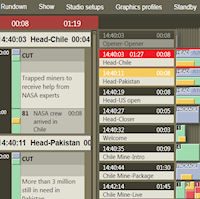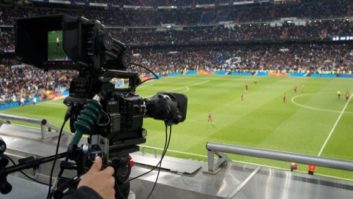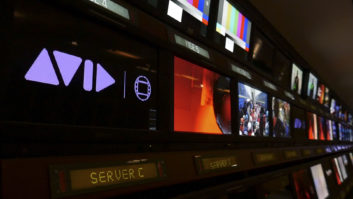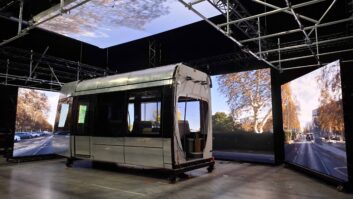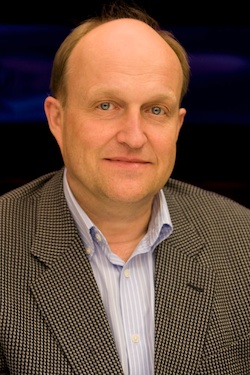
What’s the story behind the Norwegian company that claims to be the number one newscast automation provider in Europe with more than 70% market share? Dick Hobbs looks at the Business Case involved…
Norway’s state broadcaster NRK had a monopoly on television broadcasting until the 1980s, giving viewers the choice of just one channel. Consumers, having seen what was available in the rest of Europe, built up political pressure for change, and a tendering process was developed for a competitive, commercial broadcaster.
One of the primary requirements for the new broadcaster was that it should not be based in the capital, Oslo. The bid was won by a consortium that set up TV2 in Bergen, on the west coast of Norway. Bergen now brands itself ‘the knowledge city’, emphasising the strength of its university and the associated research parks.
“TV2 was set up by entrepreneurs, and that same spirit prevails,” says John Kjellevold, a senior engineer at the time of the foundation of the company, and now managing director of Mosart.
The channel went on air, from its headquarters in the dockyard district of Bergen, in 1992. By 2010 it was transmitting 13 channels over digital platforms, and profitably generating annual revenues of 364 million euros.
The entrepreneurial spirit of TV2 comes out most clearly in its approach to its technology requirements. It needed a weather graphics system and nothing on the market could provide the combination of creativity and automation sought, so it developed its own then spun the development team out into a commercial business. Vizrt now has its headquarters in a building on the next dock.
Similarly, when the Norwegian government proposed digital terrestrial broadcasting, TV2 went against the prevailing opinion that the telco should run it. Instead it set up a joint venture with NRK, Riks TV, to build and run the transmission network.
Kjellevold ran the Riks TV project, and when the DTT network was on air he looked for a new challenge. TV2 management was examining a digital newsroom. There was nothing on the market that met their commercial needs, so Kjellevold was asked to develop a system in house, with the prospect of turning it into another product if it went well.
“The innovation process starts with a problem and the knowledge to solve it,” he explains. “If you can then take the successful solution and add some capital, then you have a commercial product.” He emphasises the importance to the development of knowledgeable people – those who understand the practical issues by coming from a broadcast background.
So the project started in 2002 by bringing together a team of directors and editors to determine just what would be needed. The initial business case for TV2 was economical: before Mosart its news programmes operated with five people in the gallery. With Mosart automation there are just two: the director, who drives the programme through the Mosart interface, and an operator they call the “octopus”, who monitors the largely automated audio and vision mixers, camera OCPs and robotics, lighting board and in her spare time acts as floor manager for guests in the studio.
If the octopus role looks like an impossible task, I have watched a flagship news programme from the gallery and in practice it involves very little hands-on activity. Indeed, the programme I watched had the usual newsroom headaches of missing video packages and wildly over-running two ways with a live reporter, but it was the calmest gallery I have ever seen.
“Over the shifts, TV2 saved 14 man years by implementing Mosart,” Kjellevold explains. “That was the business case.”
Framework contract
The system first went on air for news programmes on the main channel in 2005 when programming was disrupted to cover the death of Pope John Paul II. Its success in streamlining news operations was such that TV2’s board decided to start a 24 hour news channel: “an economically dubious idea in a country of five million people,” according to Kjellevold, emphasising how important the automation would become.
TV2 Nyhetskanalen went on air at the beginning of 2007, and by May of the same year the decision was taken to spin out the newsroom automation as a commercial business, Mosart Medialab. The new company became operational on 1 September of that year, and within 10 days had won its first contract, to the unrelated TV2 in Denmark. Other broadcasters, including N24 in Germany and Sky in Rome, soon followed.
A major step forward came in 2009 when Mosart successfully won a framework contract from the BBC. According to Kjellevold, this was a long and somewhat torturous process: “four presentations, each addressing 100 questions in precisely 90 minutes. It was a lot of work and a lot of investment for a small company.
“You cannot just put a salesman on this,” he adds. “It needs detailed work by product managers.” So why go through it? “We did not think that there was a European company that could compete, and the American companies would not want to invest in it.
“For us it was worthwhile in the end. We are now sole supplier, under the framework, for newsroom automation to the BBC for four years. We already have four installations in BBC West One and four more at Salford Quays.”
Were the big name broadcasters – Mosart supplies to ARD, SVT, YLE and Al Jazeera as well as the BBC and Sky – purely looking at newsroom automation as a means of cutting costs by cutting staff? Kjellevold saw much more than simple economics.
“Flagship news programmes like ARD Aktuell or BBC News at Six rely on Mosart for the look of the programme,” he explains. “They use the functionality to build predictable and repeatable effects and complexity. We control four servers, four graphics systems, the whole of the vision mixer and back wall graphics all at the same time. We tell our customers that we are not going to limit their broadcast look,” he adds. “We say ‘tell us what you want to do and we will automate it’ – or we fail.”
Surely that must lead to customisation, which makes the product more costly and harder to maintain. Kjellevold firmly contradicts this. “It is one standard software product, continuously improving according to strategic developments and client broadcaster requirements,” he says. “If a broadcaster has a device that sits in the news studio then we will develop a driver for it because they have the right to choose that piece of equipment.”
In fact, such a requirement came up in the TV2 news studio in Bergen, where the designer called for an extremely large back wall display, at much higher resolution than could be driven through an HD switcher. It is powered by an Encore videowall processor, which is under the command of Mosart.
Pressure and jargon
The architecture of Mosart is that it sits in the centre, orchestrating the systems around it. The script and running order will be built in the newsroom computer, which talks over MOS to Mosart. Changes in the running order are instantly reflected in Mosart, so while the director in the gallery has full control over the programme through the Mosart interface, and the octopus can take manual control of any or all devices, in practice the programme is run from just one key: F12 for take next event.
Mosart is also swapping metadata with asset management, delivering as run logs and updating the database, for instance with the BBC Jupiter system.
With a standardised software system and interfaces to all the common hardware, Kjellevold suggests the time from contract signature to on air can be as little as eight or nine weeks. This includes a period of what they call show design, where the Mosart project manager works with super users in the broadcaster to build the templates that define the look of the broadcasts.
User training follows, based on the templates that have been developed so operators and support staff are learning the way that their own programmes will work, not through theoretical exercises.
Mosart is now enjoying considerable success, and is looking to expand its currently tiny workforce. “TV2 is a good owner,” Kjellevold says. “We are not seen as a cash cow, but we are not seen as a star getting an enormous amount of cash. We do not need that: we can grow with the market.”
Are there problems in being owned by a broadcaster and selling to other broadcasters – NRK in Norway now uses Mosart. He sees this as a benefit rather than a disadvantage. “Almost everyone in Mosart has done the job for real,” he says. “We understand the pressures and the jargon.
“We understand the need to free up resources, to add production values and to reduce stress,” he adds. “We think reducing stress is really important. We have heard that using some of our competitor systems is like riding a wild horse. We concentrated on reducing the need for communication, which means less shouting, without limiting what you can do right up to changing the item in preview.
“Yes, Mosart changes the workflow of how you make the news,” Kjellevold concludes. “But so far I have only heard that it changes it in a good way.”
